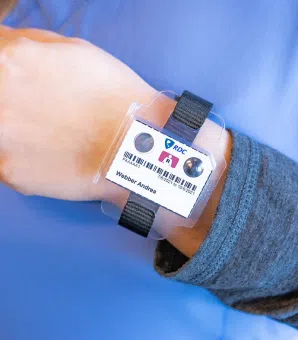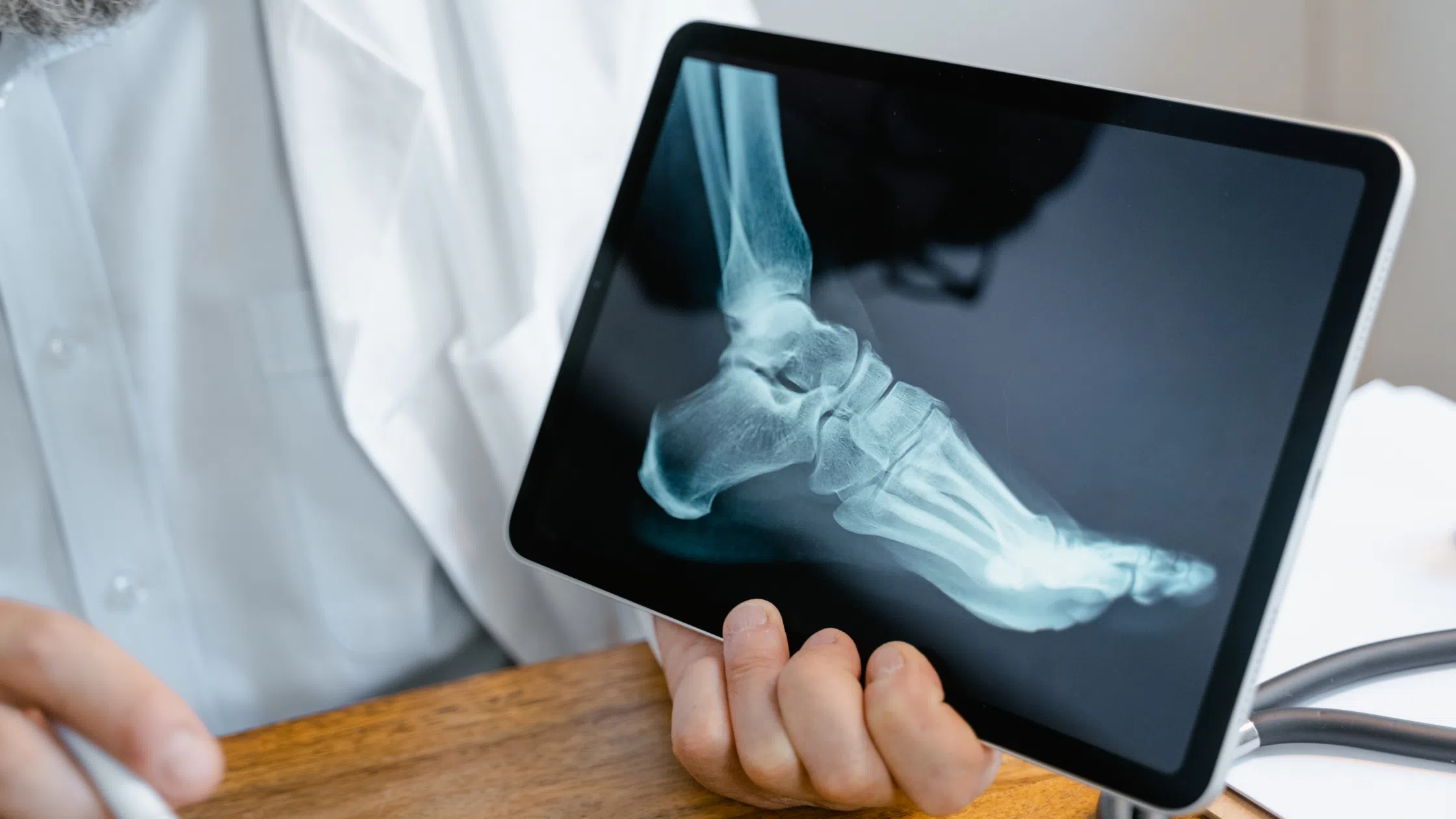
Dosimeter badge services for medical, dental, and veterinary businesses
Learn how Radiation Detection Company’s easy-to-use dosimetry solutions can boost the efficiency of your practice.
When it comes to x-ray safety, there are guidelines put in place by governing bodies that are critical to the safety of all involved. While x-rays are most commonly used for human imaging, they can also be used as an inspection device to screen cargo, vehicles, and packages to detect concealed objects (i.e. TSA scanning your carry-on bags at the airport). In this article, we will explore the measures in place to protect both the personnel using the equipment, and also patients receiving medical imaging.
As always, we hope that you find this article informative, and we look forward to hearing any feedback you may have!
Ionizing radiation has so much energy that it can knock electrons out of atoms, a process known as ionization. Ionizing radiation poses a serious risk to the health of living things due to its ability to damage tissue and DNA in genes. Ionizing radiation can come from x-ray machines, cosmic particles (particles from outer space), and radioactive material.
As we detailed in our recent blog "Time, Distance, & Shielding: Key Radiation Protection Principles," any and all exposure to ionizing radiation is dangerous. However, it is truly impossible to avoid exposure completely. This is because radiation is constantly present both in our environment (natural background radiation) and in our bodies.
Although radiation exists in our environment and bodies, humans must reduce unnecessary radiation exposure. You can do so by following the three basic tenets of radiation safety: time, distance, and shielding.
Limiting the amount of time someone is exposed to ionizing radiation in turn reduces the radiation dose they receive. The intensity and dose of radiation decreases dramatically the further you get from the source of radiation. Using or inserting the proper shield between yourself and a radiation source can greatly reduce or eliminate the dose received (more on this below).
These three principles combine to work towards the goal of keeping radiation dose "ALARA." You'll remember that ALARA is an acronym that stands for “as low as reasonably achievable.” This simply means that the goal of any radiation safety program is to minimize radiation exposure as much as possible.

An effective radiation safety program is usually managed by a qualified expert called a radiation safety officer (RSO). The RSO generally heads a radiation safety committee, which also includes a management representative and personnel who work with radiation-producing equipment or are otherwise at risk of receiving occupational radiation doses.
As we detailed in our recent article, "Radiation Safety Programs: A Comprehensive Guide," an effective radiation safety program will also include:
Examples of commonly used Personal Protective Equipment (PPE) for radiation protection from x-rays and gamma rays include lead aprons and vests, lead thyroid collars, lead gloves, and safety glasses.
Wearing a lead apron can assist in radiation dose reduction for a worker. Custom lead (or lead equivalent) aprons are available for a wide range of occupational settings and job tasks. These aprons are only effective when worn properly. Employers should ensure that both visual inspections and inspections by touch are performed regularly for signs of damage or prior misuse. Common signs of damage include wear and tear, holes, and cracks. Prior misuse results in deformed lead due to an apron being folded or stored improperly. Lead aprons can also minimize the potential for scatter radiation.
A lead thyroid collar offers additional radiation protection for the thyroid (a gland found in the front of the neck) that is particularly sensitive to radiation.
Lead-lined gloves offer protection from radiation for workers whose hands are commonly exposed. These gloves should also be used for some x-ray equipment if hands must be placed directly in the x-ray's field.
Leaded eye wear (lead glasses or radiation glasses) or opaque safety goggles can protect personnel's eyes from radiation exposure.
Check out our blog "The Use of Protective Aprons and Shields as a Radiation Safety Measure" for more information.

There are additional safety procedures in place on federal, state, and local levels. Most x-ray equipment must be registered with a state agency (i.e. a state's radiation control agency and/or the state's health department) or local agency (health department). Registration requirements may differ depending on the agency, so be sure to follow regulations provided by the governing bodies that oversee your organization.
Registrants may be required to either perform equipment tests themselves or allow state or local inspectors to perform these equipment tests. In some states, equipment registration requirements may also include regular inspections, shielding, or signage.
In the US, the Food & Drug Administration (FDA) maintains a strict radiological health program. This program is designed to protect the public from the hazardous effects of unnecessary radiation exposure from radiation-emitting electronic products.
There are also measures in place to prevent leakage radiation. This form of ionizing radiation penetrates the protective shielding of a radiation source other than the primary beam. Flaws in x-ray machine connections, or incorrectly positioned x-ray tube inserts can lead to increased leakage radiation. This is why regular inspections of equipment are imperative to prevent the potential of increased patient dose.
Radiation Detection Company (RDC) is dedicated to your safety and the safety of all of your employees. We have 75 years of experience providing quality dosimetry solutions to over 28,000 companies across the United States.
To see which of RDC’s radiation safety products are right for your department or organization, please visit our Solutions page to view our full suite of offerings. We offer a wide range of affordable and comprehensive solutions to fit the needs of both large and small organizations.
Have a question that we did not address in this article? Please reach out to our Customer Care team, and one of our specialists will be happy to answer it for you.
Learn how Radiation Detection Company’s easy-to-use dosimetry solutions can boost the efficiency of your practice.
